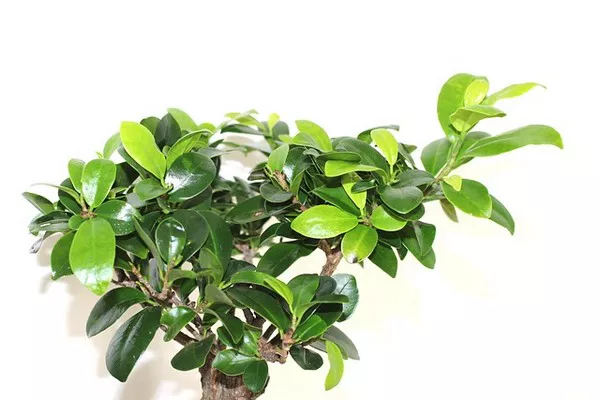Bonsai, with its delicate and captivating miniature trees, has long been revered as an art form and a symbol of patience and harmony. However, for those new to the world of bonsai cultivation, the task of selecting the right species to grow can seem daunting. With a myriad of choices available, ranging from junipers to maples, it’s essential to begin with a species that is forgiving and resilient, allowing beginners to hone their skills and cultivate confidence in their ability to care for these miniature marvels. In this article, we delve into the realm of bonsai cultivation to discover some of the easiest bonsai species to grow, providing insights into their characteristics, care requirements, and tips for success.
Understanding Bonsai Basics
Before delving into the specific species suitable for beginners, it’s crucial to grasp the fundamental principles of bonsai cultivation. Bonsai, which translates to “planted in a container” in Japanese, is an ancient horticultural practice originating in China and Japan. It involves cultivating and training miniature trees in containers, with the goal of creating a representation of nature in miniature form.
The art of bonsai encompasses various techniques, including pruning, wiring, repotting, and styling, all aimed at achieving the desired aesthetic and balance. While bonsai can be created from a wide range of tree species, certain varieties are better suited for beginners due to their resilience, adaptability, and forgiving nature.
Criteria for Selecting Beginner-Friendly Bonsai
When selecting a bonsai species for beginners, several criteria should be considered to ensure a positive and rewarding experience:
Hardiness: Beginner-friendly bonsai species should be resilient to fluctuations in environmental conditions, including temperature and humidity variations.
Adaptability: Species that can thrive indoors or outdoors provide flexibility for beginners who may not have access to outdoor growing spaces or live in climates unsuitable for certain species.
Low Maintenance: Ideal bonsai species for beginners require minimal maintenance, including watering, fertilization, and pruning, making them easier to care for and less prone to mistakes.
Readily Available: Availability of bonsai species is essential for beginners to acquire healthy and well-established specimens from reputable nurseries or bonsai suppliers.
Keeping these criteria in mind, let’s explore some of the easiest bonsai species for beginners to grow and enjoy.
1. Chinese Elm (Ulmus parvifolia)
Chinese Elm is renowned for its adaptability and resilience, making it an excellent choice for beginners venturing into bonsai cultivation. This species features small, serrated leaves and a rugged bark, lending itself well to various bonsai styles, including informal upright, cascade, and broom.
Chinese Elm bonsai thrive both indoors and outdoors, making them versatile options for beginners with limited growing spaces. They prefer bright, indirect light and well-draining soil, requiring regular watering to maintain soil moisture without waterlogging. Pruning and wiring can be performed throughout the growing season to shape and refine the bonsai’s structure.
2. Jade Tree (Crassula ovata)
Jade Tree, also known as the Money Tree or Lucky Plant, is a succulent species prized for its fleshy, oval-shaped leaves and thick, gnarled trunk. As a drought-tolerant plant, Jade Tree bonsai are forgiving of occasional neglect, making them ideal for beginners.
This species thrives in bright, indirect light and well-draining soil, requiring infrequent watering to prevent root rot. Jade Tree bonsai can be styled using pruning and wiring techniques to create elegant and compact forms. With proper care, they can develop into striking bonsai specimens that add a touch of exotic beauty to any collection.
3. Ficus (Ficus retusa/Ficus microcarpa)
Ficus bonsai, commonly known as the Chinese Banyan or Ginseng Ficus, are popular among beginners for their resilience and adaptability to indoor environments. With their glossy, dark-green leaves and aerial roots, Ficus bonsai evoke a sense of tropical elegance and vitality.
These bonsai prefer bright, indirect light and well-draining soil, requiring regular watering to maintain soil moisture levels. Ficus bonsai respond well to pruning and defoliation, allowing beginners to shape and refine their bonsai’s appearance throughout the growing season. With proper care and attention, Ficus bonsai can thrive indoors, adding a touch of natural beauty to any living space.
4. Juniper (Juniperus spp.)
Juniper bonsai are renowned for their rugged appearance and resilience, making them well-suited for beginners seeking a hardy and forgiving species. With their evergreen foliage and gnarled trunks, Juniper bonsai evoke a sense of age and maturity, reminiscent of trees found in nature.
These bonsai thrive in full sun and well-draining soil, requiring minimal watering once established. Juniper bonsai can be styled using pruning and wiring techniques to create various bonsai forms, including informal upright, cascade, and windswept styles. With their adaptability to a wide range of climates and growing conditions, Juniper bonsai are an excellent choice for beginners looking to embark on their bonsai journey.
5. Dwarf Jade (Portulacaria afra)
Dwarf Jade, also known as Elephant Bush or Miniature Jade, is a succulent species prized for its small, round leaves and thick, woody stems. As a drought-tolerant plant, Dwarf Jade bonsai are forgiving of occasional neglect, making them ideal for beginners.
This species thrives in bright, indirect light and well-draining soil, requiring infrequent watering to prevent root rot. Dwarf Jade bonsai can be styled using pruning and wiring techniques to create compact and elegant forms. With their resilience and adaptability, Dwarf Jade bonsai are an excellent choice for beginners seeking a low-maintenance and visually appealing bonsai species.
Conclusion
Embarking on the journey of bonsai cultivation is a rewarding experience that requires patience, dedication, and a willingness to learn. By selecting beginner-friendly bonsai species such as Chinese Elm, Jade Tree, Ficus, Juniper, and Dwarf Jade, beginners can cultivate confidence in their ability to care for these miniature marvels while enjoying the beauty and tranquility they bring to any space. With proper guidance and care, bonsai enthusiasts of all levels can embark on a fulfilling and enriching bonsai journey that lasts a lifetime.


